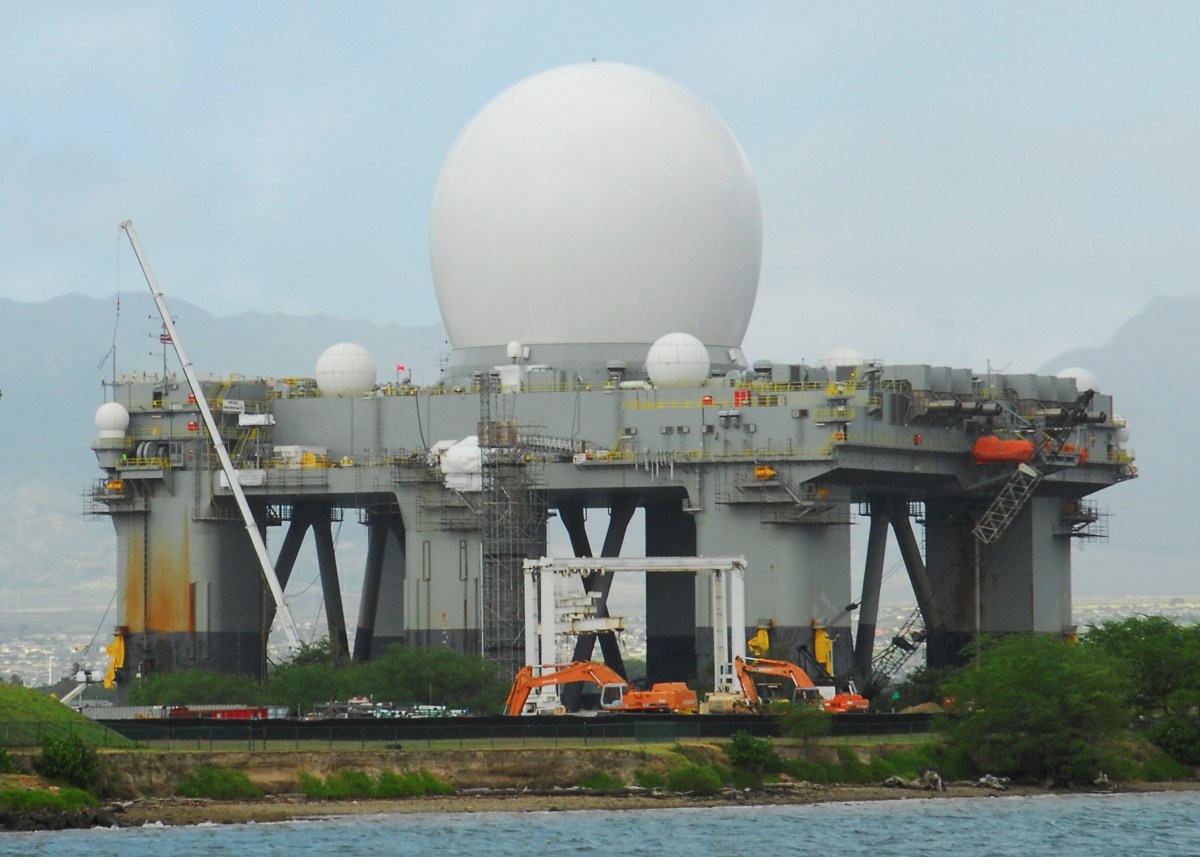The Sea-Based X-Band Radar, designed to detect missiles headed toward the United States homeland, is undergoing maintenance to replace its golf ball-shaped radome.
Rear Admiral Benjamin Nicholson, commander of the U.S. Navy’s Military Sealift Command, visited the radar, which he described as “very powerful,” in Hawaii last week, saying the replacement work offered a rare opportunity to view its antenna.
Why It Matters
Serving as one of the eyes of the U.S. homeland missile defense architecture, the Sea-Based X-Band Radar is mounted on a mobile, oceangoing, semi-submersible platform. It is intended to acquire, track and discriminate flight characteristics of hostile missiles.
Measuring 240 feet wide and 390 feet long, the 2,000-ton “extremely capable” radar is the largest of its kind in the world, the U.S. Missile Defense Agency said. The entire structure—which stands 282 feet tall—displaces nearly 50,000 tons at its operating draft.

The recent Netflix release of A House of Dynamite has drawn public attention to U.S. homeland missile defense system. In the film, Sea-Based X-Band Radar detects a missile flying across the Pacific Ocean toward Chicago that later evades interception.
What To Know
In a Facebook post on Monday, the Military Sealift Command said Nicholson visited the command’s office in Pearl Harbor and went aboard the Sea-Based X-Band Radar.
One of the photos released by the command shows Nicholson and other personnel standing in front of the radar, which was exposed after its white radome was removed last week for replacement as part of routine maintenance, Hawaii News Now reported.
Photos circulated on the social media platform X show the radome being deflated as it was lifted by a crane from the radar to the shore. According to Hawaii News Now, this appears to be the first time the radar has had its radome replaced.
Mike Elliott of Drone Services Hawaii said the company was contracted to film the removal and installation of a new radome for the radar.
“Once everything is installed, we will be doing a full exterior and interior inspection with 3D models,” he added.
In March 2023, the Missile Defense Agency hosted a tour of the Sea-Based X-Band Radar, allowing media to get a close look at the radar, which was still covered by its radome. At the time, the radar platform was undergoing maintenance and upgrades.
Loading twitter content…
According to the Naval History and Heritage Command, the Missile Defense Agency transferred the floating radar to the Military Sealift Command in December 2011 for operations and maintenance, while the agency retained responsibility for the radar.
What People Are Saying
Rear Admiral Benjamin Nicholson, commander of the U.S. Navy’s Military Sealift Command, said: “[Sea-Based X-Band Radar] is a unique part of the U.S. missile defense system with a very powerful radar atop a self-propelled semi-submersible platform crewed by U.S. Merchant Mariners. The iconic white radome is being replaced, giving us a rare look at the radar antenna.”
The U.S. Missile Defense Agency said: “Operationally, the [Sea-Based X-Band Radar] provides an advanced radar capability to obtain missile tracking information while an incoming threat missile is in flight, discriminates between the hostile missile warhead and any countermeasures, and provides that data to interceptor missiles so they can successfully intercept and destroy the threat missile before it can reach its target.”
What Happens Next
It remains to be seen when the Sea-Based X-Band Radar will be redeployed to continue its round-the-clock mission monitoring potential missile launches in the Pacific Ocean.







